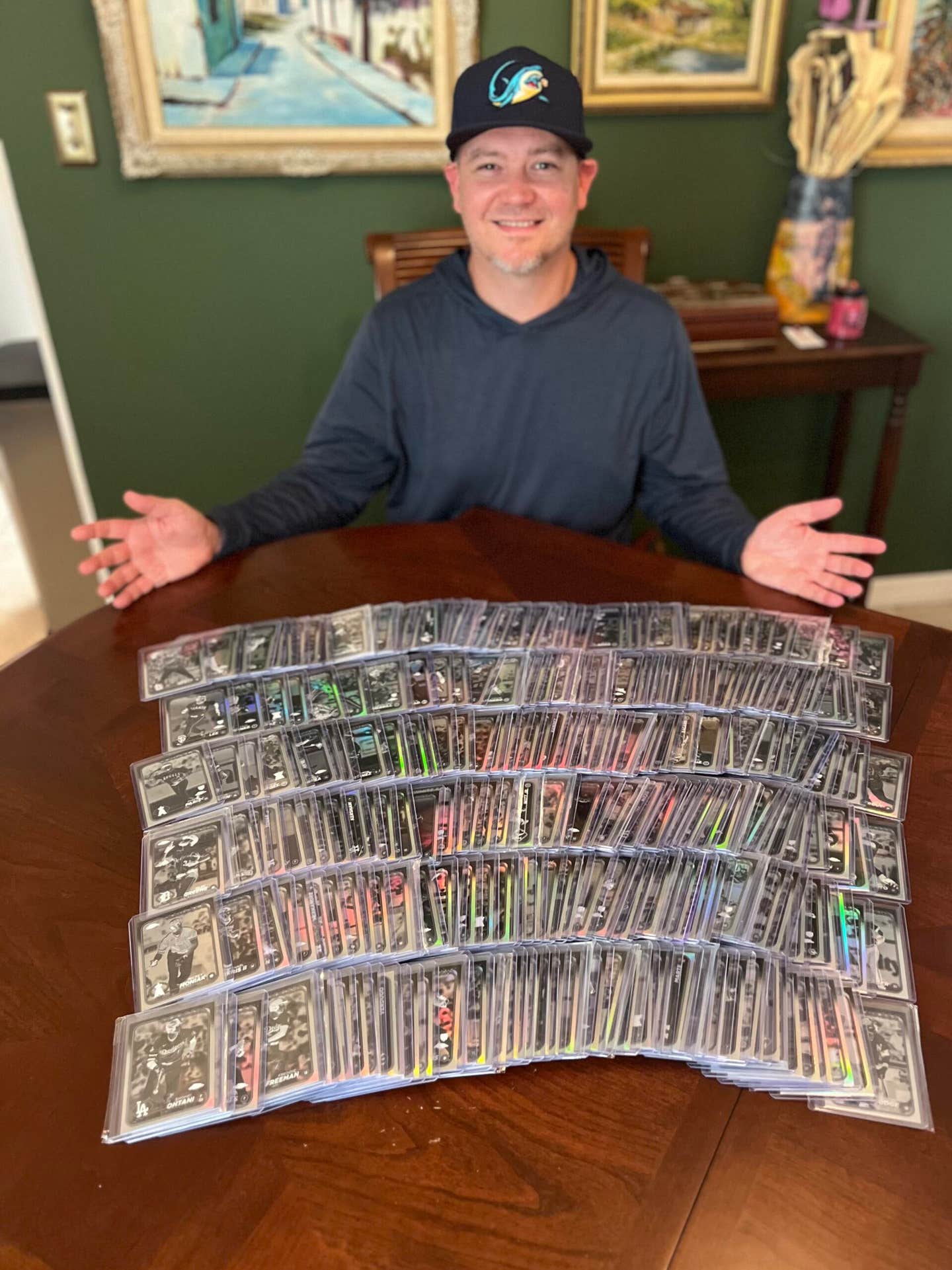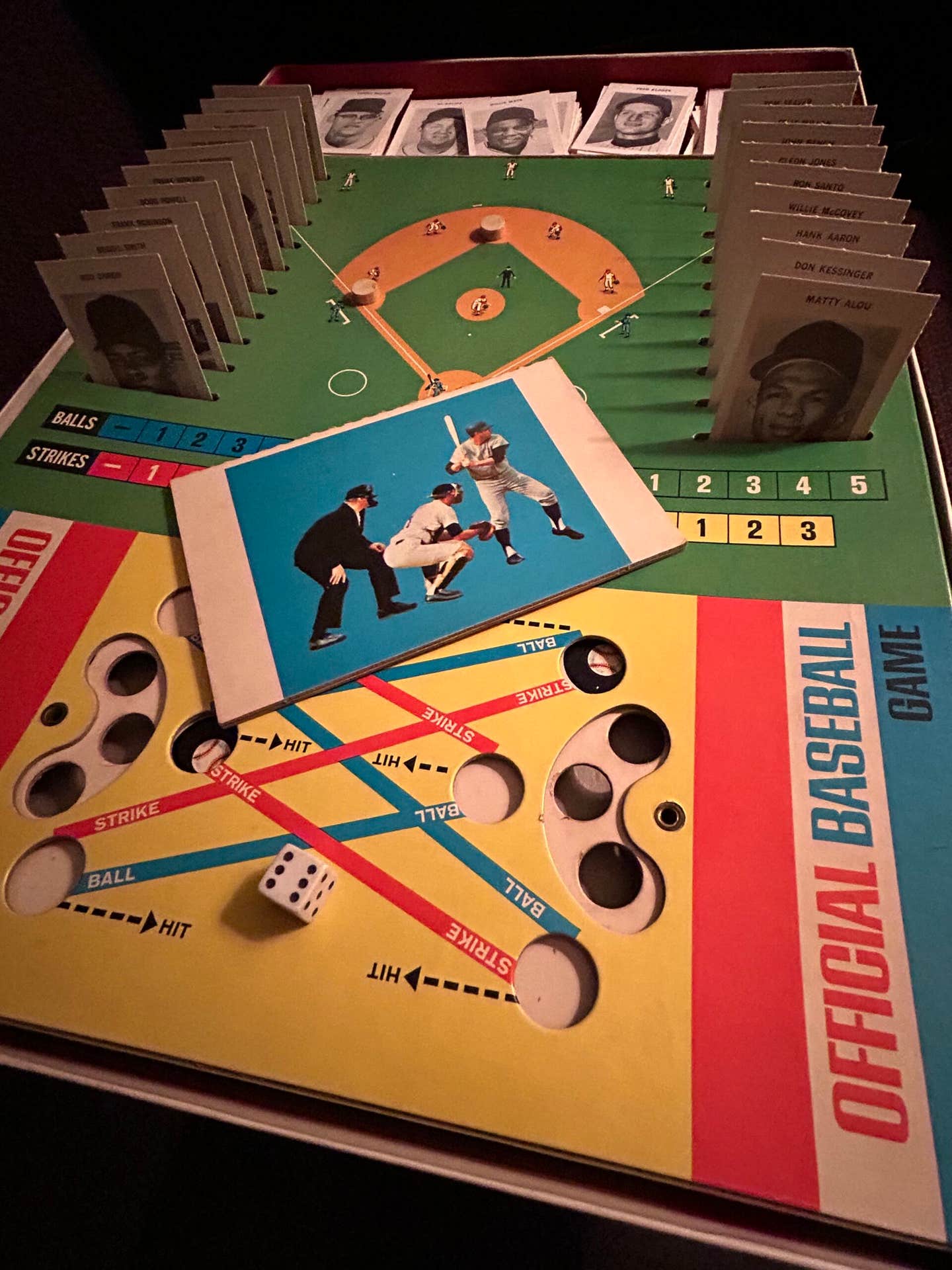Cards
’57 Braves still a popular squad with collectors
Slowly, we’re losing them. With Lew Burdette’s passing on Feb. 6, 2007, half of the legendary 1957 Milwaukee Braves’ players are now deceased.
The Braves’ family lost some members: Dave Jolly (died 1963) and Del Rice (1983), for example, quite a while ago. Popular figures like Bill Bruton (died 1995) and Joe Adcock (died 1999) followed. And Hall of Famers Eddie Mathews (died 2001) and Warren Spahn (died 2003) have left us as well. They were all guys who should’ve lived forever, trim and muscled behind gray flannel, but do so now only in memory.
The revered players who live on, including Hank Aaron and Johnny Logan, are ambassadors for the Milwaukee Braves’ legacy. Logan, in fact, is one of the founders of the Milwaukee Braves Historical Society – an organization dedicated to preserving the memories from the team’s glory years.
Today, many active collectors are too young to remember the Braves’ heyday, but that hasn’t prevented them from diving headlong into Braves memorabilia. Two such collectors, Greg Kroll and Nick Parsons, owe their interest in the Braves to their fathers.
“My father ushered at County Stadium from the beginning to the end of the Braves’ era in Milwaukee,” Kroll said. “He always told me stories about the Braves.”
“My father grew up listening to the Braves on the radio,” Parsons said. “He gave me some old programs and ’59 Topps cards and (my interest in collecting) started from there.”
Parsons has parlayed that passion into a livelihood as the owner of Midwest Sports Buffet.
Kroll got his jump-start collecting and selling Braves’ memorabilia in the early 1990s.
“A friend of mine began bringing in the ’57 Braves to card shows to sign autographs,” he said. “When he got out of the business I purchased his entire inventory of autographed baseballs and I was off and running.”
Kroll’s Wisconsin enterprise, Waukesha Sports Cards, has continued the tradition of public signings with members of the ’57 team.
Signs of the Old Times
Fans get more than just an autograph at a Braves’ signing – they also get something priceless.
“All of the players I have met from that team were always happy to share a memory from their playing days so people could connect with them,” Kroll said. “Spahn and Mathews were both characters and always had stories to tell. The ’57 Braves have always been accessible to the fans.”
Though Kroll has worked with numerous Braves of yesteryear, including Del Crandall (“one of the nicest ballplayers I have ever met”) and Burdette (“very friendly with fans and a great person”), one card signing stands out above all the others.
“My most memorable Braves moment was going out to dinner with Bob Buhl and Gene Conley after a signing,” he said. “Just being able to sit and listen to their stories made for a great evening.”
Another tale with a happy ending occurs when autograph collectors search for material inked by Aaron, Spahn or Mathews.
Signed memorabilia from these three popular Braves is relatively plentiful: A signed Aaron photo sells for $75, while an autographed image of Spahn or Mathews costs $50. And an autographed 8-by-10 of Red Schoendienst, the fourth Hall of Famer from the ’57 Braves, can be obtained for just $20. However, other Braves’ signatures are much more elusive and expensive.
Autographs from Wes Covington and Mel Roach, according to Parsons, are two of the toughest to locate of living ’57 Braves – while Bob Trowbridge is one of several difficult to track down of the deceased player signatures.
In addition, Kroll mentioned that several deceased Braves’ autographs have recently skyrocketed in value.
“Billy Bruton and Joe Adcock signed baseballs, at $400 or more, sell for over double the price of a Hank Aaron ball because they are so rare,” he said. “And almost all Braves’ autograph collectors are looking for Don McMahon, Del Rice and Bob Hazle.”
Batmen
Of course, not all valuable memorabilia comes in the form of an autograph. Both Kroll and Parsons cited game-used items as highly sought-after – but almost impossible to find.
Collectors unwilling to shell out large sums of cash to own game-used bats can at least view a collection of game-used Braves’ lumber at www.whenitwasagame.net. The site’s authors personally own many authentic big-league sticks, inc
luding models used by Aaron, Mathews, Crandall, Logan, and Andy Pafko.
The link, “Booming Bats of the ’50s,” not only chronicles each bat’s specifications, but also provides detailed accounts from the games in which the bats were last used. The Aaron bat is believed to be one of Aaron’s earliest game-used examples in existence.
Even bats never actually swung by the home run king have a huge following – if Aaron’s Sharpie has glided over the barrel. Collectors should expect to pay $250 for lumber with Hammerin’ Hank’s signature.
But the buck doesn’t stop at bats.
“Anything related to the Milwaukee Braves sells well,” Kroll said. “I’ve bought and sold yearbooks, programs, scorecards, buttons, figurines, bobble head dolls, cards, etc. It’s getting harder to find these items because people don’t want to part with them.”
Collectors who do part with a ’57 World Series program (County Stadium edition) will likely pocket $75, while Series press pins fetch as much as $200.
Parsons, however, has discovered his own Braves collecting niche.
“I can’t get enough of the old Wirephotos,” he said. “With autographs you usually see the same old photos, but the Wirephotos look a little more unique. I try to put together a collage of the same game. When four wire photos are framed together they look amazing.”
Home of the Braves
Any serious Braves baseball card collection is incomplete without Aaron’s ’54 Topps rookie card. Though by no means scarce, collectors have cherished the card for decades. The card books for $1,900 and remains one of the most popular and recognizable rookie images of all time.
Other permanent fixtures on the radar of a Braves collector include the alpha and omega of the ’52 Topps set. Though Milwaukee did not yet have the Braves franchise in 1952, the first (Andy Pafko) and last (Mathews) players depicted in that inaugural Topps release are members of the ’57 Braves, and, ironically, both cards are significantly more valuable than any Aaron issue. The condition-sensitive Pafko card lists for $5,000 and the scarce high-number Mathews rookie books at $10,000.
The Mathews card ranks as the second-highest priced card of the modern era, but it’s not Mathews’ only claim to collecting fame. The third baseman also graced the first-ever issue of Sports Illustrated. The landmark Aug. 16, 1954, edition depicts Mathews’ ferocious swing, bat a blur, and sells in the $150-$200 range.
Regardless of price, regardless of which side of the dealer/customer counter you stand on, every Braves fan has a favorite piece of memorabilia. For Parsons, it’s a bat signed by 25 members of the ’57 squad. Kroll’s favorite is also a signed item – a 16-by-20 team picture with 26 player signatures.
“It makes me a little sad when I look at the photo because so many of the guys are no longer with us,” he said.
Gone, too, is the casual goodness of baseball’s Golden Age, a time when teams like the ’57 Milwaukee Braves were not just comprised of heroes, but also trod the same ground as their faithful followers.
“Players lived with regular fans and played ball with neighborhood kids,” Kroll said. “I’ve heard multiple accounts of Braves’ players driving neighborhood kids home from the ballpark. The days of interacting that closely with players are gone forever, but hopefully the memories will be passed on for generations to come.”
Fifty years ago the Milwaukee Braves beat the mighty New York Yankees to win the World Series. Twenty-five years ago years ago the Milwaukee Brewers brought the American League pennant to Milwaukee. A trend seems to be developing – every 25 years the World Series comes to Wisconsin.
The Series returns again this year – in the form of an exciting new exhibition at the Wisconsin Historical Museum. Opening July 17, World Series Wisconsin celebrates two banner years in Milwaukee baseball history. Discover the story behind the “Bushville” team that upset Casey Stengel’s Yankees in 1957. Relive the exhilaration of 1982, when the Brewers earned the nickname “Harvey’s Wallbangers.” Learn about the achievements of Hall of Famers such as Robin Yount and Hank Aaron, fan favorites such as Gorman Thomas and Johnny Logan, and other crucial players, including Pete Vukovich and Andy Pafko.
“They’re both very interesting teams because they’re very generational,” said Troy Kinunen of MEARS authentication service, who served as the guest curator on the project. “The 1957 Braves were the most beloved team of the baby-boomer era and the 1982 Brewers were the team of a younger era.”
Kinunen said he spent 200-plus gratis hours putting the exhibition together. “I advised on artifact selection, procurement of the artifacts and also helped develop the World Series of Wisconsin card set.”
Kinunen’s links to the memorabilia industry were vital to the project, including having access to some of the biggest names in memorabilia collecting. “I went to these guys and asked for hundreds of thousands of dollars worth of artifacts and every one of them was 100 percent receptive to the idea,” Kinunen continued.
“Stephen Wong flew his items in from Hong Kong, and Richard Angrist loaned memorabilia that hasn’t seen the light of day since he purchased it,” he added.
“Bud Selig even did a half-hour video talking about Wisconsin baseball. That’s the commissioner of baseball who took time out of his busy schedule to help contribute to this project.”
There are dozens of authentic, game-used objects – many worn and used by such baseball legends as Aaron, Eddie Mathews, Red Schoendienst and Warren Spahn of the Braves, and Rollie Fingers, Paul Molitor, and Yount of the Brewers. Some of these objects have not been together in one place since the 1957 World Series. Original artifacts from Milwaukee County Stadium, fan souvenirs, historical photographs and original radio broadcast clips and television footage also help bring the excitement of these victory seasons to life. After touring the exhibition, take home a commemorative set of Milwaukee Braves baseball cards that tell further stories of the team’s players, coaches and fans (see adjacent article).
World Series Wisconsin is supported by the Evjue Foundation, the charitable arm of the Capital Times, Delaware North Companies, Albert F. “Red” Schoendienst, Chet Krause (founder of Krause Publications, formerly the parent company of SCD), Miller Brewing Co., the Milwaukee Journal Sentinel and Major League Baseball. The exhibition was produced with the assistance of consulting curator Troy Kinunen and Memorabilia Authentication and Evaluation Services (MEARS).
The Wisconsin Historical Museum is located on Capitol Square at 30 N Carroll St., Madison. Call 608-264-6555 for more information, or visit online at: www.wisconsinhistory.org/museum.








